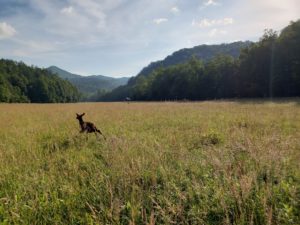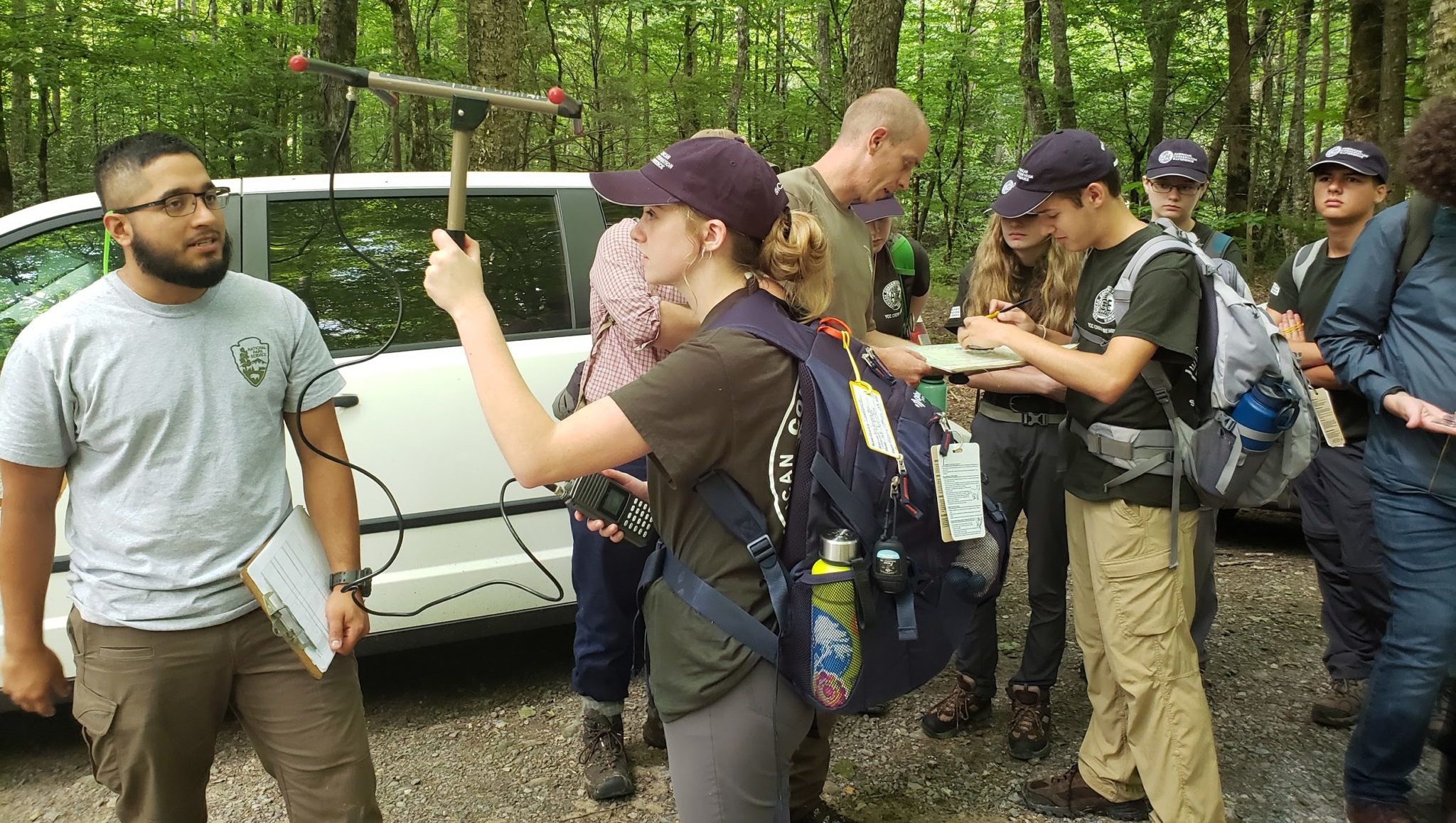Monitoring elk with telemetry was one of the skills the GSMNP high school summer interns learned during their six-week internship. Hunter Hicks explains the experience the interns had tracking down elk calves.
by Hunter Hicks
William Blount High School graduate
Maryville, Tennessee
We went to Cataloochee Valley for elk monitoring.
There, we learned what rangers do to monitor elk and why they monitor them. We also learned not only about elk themselves but how the rangers track the elk down.
Wildlife technician Nick Melton taught us about the elk.
One of the first things we learned was that to monitor the number of elk calves that live to adulthood, the rangers put a radio collar around the calves’ necks to track them down later.
Using telemetry to track elk
We were then taught about telemetry and shown the antenna and receiver used to track down collared elk. The photo at the top of the page is of the interns working with seasonal ranger Brandon Garcia to learn to use the telemetry equipment.

After being shown the tracker, we were shown where an elk calf would live while it grew.
We used the tracker to get close to find the hidden elk.
After learning about the field work, we had a chance to try it hands-on. We learned how to determine where a calf might be by using telemetry.
To practice, we drove to an area visible on our map and then listened to which direction the tracker would beep the loudest. The loudest direction indicated the direction of the collar.
Mapping the elk’s location
We then would draw a line on our map in the direction of the collar. We then repeated this another two times until we had a triangle on our map.
When we did it correctly, we knew that somewhere inside our triangle was the elk.
Once we made our triangle, we followed the radio signal tracker beeping until we found the elk lying hidden in a field of tall grasses.
Reflection
This day was very special to me. I learned a lot of new skills that I can apply later in life.
Working in the field gave me a better understanding of what I could do in the future.
After going to college, I hope to pursue a career in biology. So this day helped me understand my future options.
****
For six weeks, the interns worked with rangers, Teachers in the Parks and volunteers on projects in the park to learn more about GSMNP and to get a feel of what being a park ranger is like.
Sixteen students from North Carolina and Tennessee participated in the program this summer.
Friends of the Smokies has helped support the GSMNP High School Internship Program for 17 years, initially providing the salaries for the interns and then helping fund the program staff salaries. The program is funded in part by the American Conservation Experience (ACE).
Several of this summer’s interns have written guest posts and compiled photos of their experiences, which will be published on the FOTS blog. The photos in this post were taken by the Tennessee interns.
A special thanks to Ranger Jessica Snow, who coordinated the Tennessee interns, and Ranger Erin Lamm, who coordinated the North Carolina interns, for their assistance with the interns’ blog posts.
You can support the GSMNP high school summer internship program or support other education programs that FOTS funds, including Teachers in Parks, Parks as Classrooms, the Kathryn McNeill Endowment that funds an education specialist, and the Park Liaison program at the Cherokee School.

